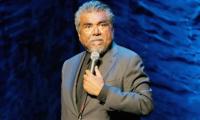Karachi
In Nazimabad, the Sindh Sports Complex looked deserted from outside with no signs of activity, but inside its courtyard, girls aged 15 and onwards were adjusting their body posture to hold held their palms against one another to give trials for arm-wrestling.
However, it soon transpired that the commotion of girls cheering their fellows by chanting their names was nothing compared to the happenings when boys come for their trials because the area is full of young men who want to take a shot at a game which despite its popularity remains ignored in the country.
With a referee standing to watch out for fouls, the participants even stood of empty crates to reach the set-up comprising padded boxes on which the elbow is supposed to be placed firmly. If the elbow is raised during the match, the contestant has committed a foul, and two fouls would lead to disqualification.
Some of the girls, however, did not belong to Karachi and had come from Nawabshah for trials in other sports when they were asked to go for a quick match.
While this might appear as a good sign in terms of girls’ participation in the sport, it is unwise to let amateurs play without proper training because one might break their wrist or fingers in the process.
Although the game appears to be hassle-free, it demands great mastery of techniques which help the players in defeating their opponents in a fraction of seconds.
Amniks Rose, currently a university student, won the trial matches remaining undefeated. Accompanied by her sister who had also come to participate, Rose was sent to Uzbekistan to learn more about arm-wrestling:
“I am basically a gymnast but I was asked to try my hand in arm-wrestling. The game is simple in nature and doesn’t need the player to be very strong; rather it’s all about learning the right techniques.”
She added that despite injuries when someone exerts tremendous amount of pressure on fingers, she chooses to ignore the pain and does not back down.
“This is an indoor sport and underground to a certain extent. It’s usually considered a sport for boys but I always dwelled on why we couldn’t play it. Turns out we can and, hopefully soon, we too will be competing at a national level event,” she shared.
“With three basic moves - hook, top load and press - the players can defeat the opponent as the wrist gets bent in ‘hook’, and in ‘press’ the player forms an angle in which the shoulder exerts the strength, while in top load one aims to break the grip of the rival,” explained Bilal Taj who will be going to Faisalabad to participate in the national tournament.
But like many indoor sports, arm-wrestling suffered a great deal because of the authorities’ lack of interest.
To counter this, Owais Butt, a known arm-wrestler, decided to take up the responsibility of saving the sport in the city and formed his private league in 2006 which came to be known as Arm Busters League (ABL).
“When people became interested in arm-wrestling back in 2005 or 2006, we formed a sports league getting all arm-wrestling enthusiast across the country on board. The league caters to both boys and girls who participate actively. However in 2010 when the sports was taken to a national level, it was expected that the players affiliated with the ABL would be chosen but they weren't selected and the responsibility was given to undeserving people,” said Butt.
The ABL does not only hold regular matches but also promotes the spirit of the game by organising tournaments like “Money on the Table” where a certain amount is kept for the winner to walk away with.
Following in Butt’s footsteps, another player Shiraz Baig formed the Arm-Wrestlers (Cena Group) to help amateurs train. While his venture has gained traction among enthusiasts due to a professional approach, the title of his group also makes for an interesting anecdote as it was named after WWE wrestler John Cena because Baig started to resemble him after getting a similar haircut.
With ventures such as these being spearheaded by dedicated professionals, the increasing participation of girls seems a beacon of hope for an end to male dominance in Pakistan’s sports circles. However, the existing rift between national and private clubs could not only hinder our girls’ exposure to the game but also poses the danger of further alienating a sport that is already ignored in the country.
An aerial view of Karachi city. — AFP/FileCelebrating ShakespeareThe National Academy of Performing Arts is...
A representational image showing people taking part in a plantation drive in Pakistan. — UNAP website/FileKARACHI:...
A representational image of a gavel in a court. — Unsplash/FileAn anti-terrorism court has issued bailable arrest...
Two employees while working on a gas pipeline in an unidentified location. — AFP/FileThe SSGC disconnected gas...
Murtaza Bhutto brother of the then prime minister and Pakistan Peoples Party chief Benazir Bhutto . — Facebook/Mir...
CEO, KWSC Engineer Syed Salahuddin Ahmed pose for a photo at the KWSC office this image was released on March 12,...







